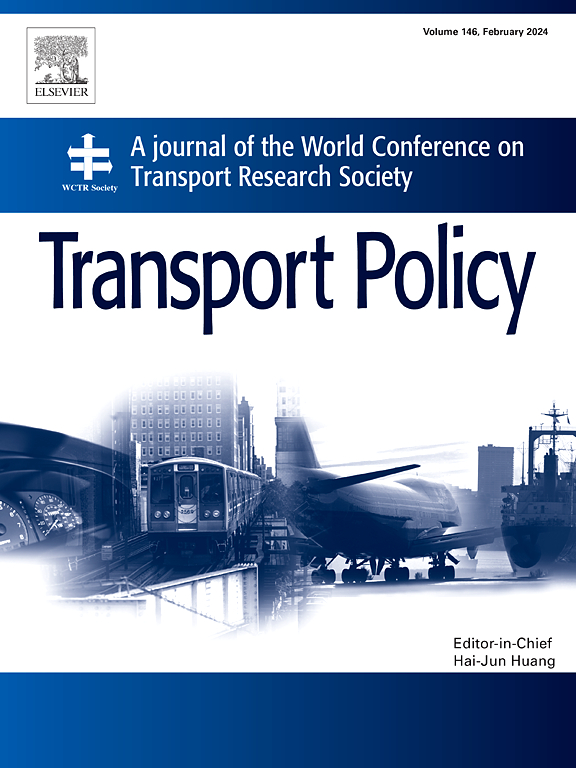Green signal addresses the financing dilemmas in port development
IF 6.3
2区 工程技术
Q1 ECONOMICS
引用次数: 0
Abstract
With increasing global trade demands and the digital and green transformation of ports, the financing dilemma has emerged as a critical constraint on port development. To address the issue of information asymmetry between ports and investors, this paper proposes green port construction with the shore power berth installation rate as a core indicator as a signaling mechanism, constructing a dynamic Bayesian game model to analyze the strategic interactions and equilibrium conditions between ports and investors. The research demonstrates that when the shore power berth installation rate falls within a reasonable range (i.e., the cost of green construction for high-utilization ports is lower than their digitalization returns, while the cost exceeds returns for low-utilization ports), a separating equilibrium can be achieved—efficient ports signal their high quality through green construction to attract investment, while inefficient ports abstain from such initiatives. Numerical simulations, based on data from Hebei Port Group, validate the effectiveness of this mechanism and highlight that excessively high shore power installation standards can lead to a pooling equilibrium, resulting in investor refusal to finance. The numerical simulation also shows the speed at which the game tends toward equilibrium under different conditions. The stronger the profitability of the port after receiving investment, and the greater the probability that investors adopt a strategy to recognize green signals at the initial stage of the game, the faster the game tends to move towards a separating equilibrium.
绿色信号解决了港口发展中的融资困境
随着全球贸易需求的增长和港口数字化、绿色化转型,融资困境已成为制约港口发展的重要因素。针对港口与投资者之间的信息不对称问题,本文提出以岸电泊位装机率为核心指标的绿色港口建设作为信号机制,构建动态贝叶斯博弈模型,分析港口与投资者之间的战略互动和均衡条件。研究表明,当岸电泊位安装率在合理范围内(即高利用率港口的绿色建设成本低于其数字化收益,低利用率港口的绿色建设成本超过其数字化收益),可以实现一种分离均衡——高效港口通过绿色建设表明其高质量,吸引投资,而低效港口则不这样做。基于河北港口集团数据的数值模拟验证了这一机制的有效性,并强调了过高的岸电安装标准可能导致池化均衡,从而导致投资者拒绝融资。数值模拟还显示了在不同条件下博弈趋于平衡的速度。港口接受投资后的盈利能力越强,投资者在博弈初始阶段采取识别绿色信号策略的概率越大,则博弈趋向分离均衡的速度越快。
本文章由计算机程序翻译,如有差异,请以英文原文为准。
求助全文
约1分钟内获得全文
求助全文
来源期刊

Transport Policy
Multiple-
CiteScore
12.10
自引率
10.30%
发文量
282
期刊介绍:
Transport Policy is an international journal aimed at bridging the gap between theory and practice in transport. Its subject areas reflect the concerns of policymakers in government, industry, voluntary organisations and the public at large, providing independent, original and rigorous analysis to understand how policy decisions have been taken, monitor their effects, and suggest how they may be improved. The journal treats the transport sector comprehensively, and in the context of other sectors including energy, housing, industry and planning. All modes are covered: land, sea and air; road and rail; public and private; motorised and non-motorised; passenger and freight.
 求助内容:
求助内容: 应助结果提醒方式:
应助结果提醒方式:


